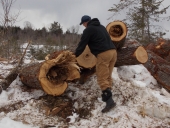
 1
1




 4
4




Visit Redhawk's soil series: https://permies.com/wiki/redhawk-soil
How permies.com works: https://permies.com/wiki/34193/permies-works-links-threads
 1
1




 1
1






 4
4




Invasive plants are Earth's way of insisting we notice her medicines. Stephen Herrod Buhner
Everyone learns what works by learning what doesn't work. Stephen Herrod Buhner
 7
7





"Study books and observe nature; if they do not agree, throw away the books." ~ William A. Albrecht

 3
3




Some places need to be wild




Invasive plants are Earth's way of insisting we notice her medicines. Stephen Herrod Buhner
Everyone learns what works by learning what doesn't work. Stephen Herrod Buhner
 1
1




 4
4




In the south when the wind gets to 75 mph they give it a name and call it a hurricane. Here we call it a mite windy...
 2
2




Nothing ruins a neighborhood like paved roads and water lines.
 1
1




Hubby recently bought a battery chainsaw pole pruner. For fruit trees it might be really useful, as fruit trees will have been encouraged to grow "out" rather than "up". Being able to remove branches sticking out while standing on the ground could be useful.Unless I was in a big hurry for some reason I see no need at all for much equipment other than maybe a chain saw.
Visit Redhawk's soil series: https://permies.com/wiki/redhawk-soil
How permies.com works: https://permies.com/wiki/34193/permies-works-links-threads
 2
2




Nails are sold by the pound, that makes sense.
Soluna Garden Farm -- Flower CSA -- plants, and cut flowers at our farm.
 2
2




Dorothy Pohorelow wrote:Cherry can have value. Some wood workers and folks who are into smoking food may really want that wood.
 6
6




 2
2




--------------------
Be Content. And work for more time, not money. Money is inconsequential.
 2
2








Carl Nystrom wrote: You could even dig a trench and burn slash inside to make a giant quantity of biochar. Just let it burn down, then push the dirt back on top. Instant carbon sequestration.




 1
1




Letting it rot in place so that microorganisms can drag down the carbon over time is proper solution for carbon sequestration.








Moderator, Treatment Free Beekeepers group on Facebook.
https://www.facebook.com/groups/treatmentfreebeekeepers/









 1
1




Check out Redhawk's soil series: https://permies.com/wiki/redhawk-soil




 3
3




Check out Redhawk's soil series: https://permies.com/wiki/redhawk-soil

|
Think of how stupid the average person is. And how half of them are stupider than that. - Carlin But who reads this tiny ad?
The new permaculture playing cards kickstarter is now live!
https://www.kickstarter.com/projects/paulwheaton/garden-cards
|






